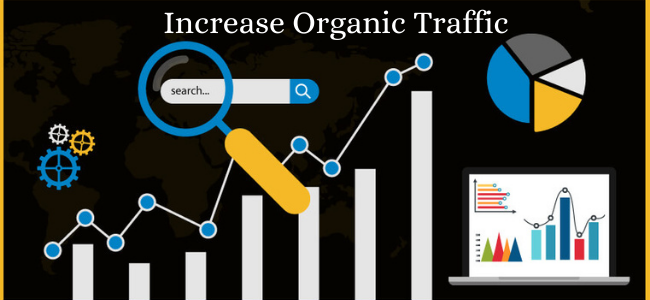In today’s digital landscape, increasing organic traffic is crucial for any website aiming for long-term success. Organic traffic refers to visitors who find your site through search engines, without paid advertising. While it can take time and effort, implementing effective strategies can significantly boost your site’s visibility and attract more visitors. Here’s a comprehensive guide on how to increase organic traffic to your website.

1. Optimize for Search Engines (SEO)
Search Engine Optimization (SEO) is fundamental for improving organic traffic. Here are key areas to focus on:
- Keyword Research: Identify relevant keywords that your target audience is searching for. Use tools like Google Keyword Planner, Ahrefs, or SEMrush to find keywords with high search volume and low competition.
- On-Page SEO: Incorporate keywords naturally into your content, including titles, headers, meta descriptions, and image alt texts. Ensure your content is informative, engaging, and answers users’ queries effectively.
- Technical SEO: Improve your website’s structure and loading speed. Optimize your site for mobile devices, ensure a secure connection (HTTPS), and create an XML sitemap to help search engines index your pages.
2. Create High-Quality Content
Content is king when it comes to attracting organic traffic. Here’s how to create content that resonates:
- Focus on Value: Write informative, engaging, and relevant articles that address your audience’s pain points or interests. Provide actionable insights, tips, or solutions that they can implement.
- Use Different Formats: Experiment with various content formats such as blog posts, videos, infographics, podcasts, and case studies. Different formats appeal to different audiences, increasing your reach.
- Consistency is Key: Regularly publish new content to keep your audience engaged and encourage search engines to index your site frequently. Create a content calendar to plan your posts in advance.
3. Leverage Social Media
Social media can amplify your content and drive organic traffic. Here’s how to use it effectively:
- Share Your Content: Promote your blog posts and other content on social media platforms like Facebook, Twitter, Instagram, and LinkedIn. Encourage followers to share your content to reach a wider audience.
- Engage with Your Audience: Respond to comments and messages, participate in relevant discussions, and join groups related to your niche. Building relationships can increase brand awareness and drive traffic.
- Use Hashtags: Incorporate relevant hashtags in your posts to increase visibility and discoverability. Research popular hashtags in your niche to maximize reach.
4. Build Backlinks
Backlinks from reputable websites can significantly improve your site’s authority and organic traffic. Here’s how to build them:
- Guest Blogging: Write guest posts for authoritative blogs in your industry. This not only helps you gain backlinks but also exposes your content to new audiences.
- Collaborate with Influencers: Partner with influencers or thought leaders in your niche to create content or promote your website. Their endorsement can lead to increased traffic and credibility.
- Create Shareable Content: Infographics, research studies, and unique insights are more likely to be shared and linked to. Invest time in creating high-quality, shareable resources.
5. Utilize Email Marketing
Email marketing can effectively drive traffic back to your website. Here’s how to leverage it:
- Build a Mailing List: Create an email list by offering valuable content (e.g., eBooks, webinars) in exchange for email addresses. Ensure your subscription process is straightforward.
- Send Regular Newsletters: Keep your audience informed about new blog posts, promotions, or updates. Include engaging subject lines and clear calls-to-action (CTAs) that direct readers to your website.
- Segment Your Audience: Tailor your emails based on user preferences or behavior to increase engagement and click-through rates. Personalized emails can lead to higher traffic.
6. Monitor Analytics and Adjust Strategies
Regularly analyze your website’s performance to understand what works and what doesn’t. Here’s how to effectively use analytics:
- Use Tools Like Google Analytics: Track metrics such as traffic sources, user behavior, and bounce rates. Identify which pages perform well and which need improvement.
- A/B Testing: Experiment with different headlines, content formats, and CTAs to determine what resonates most with your audience. Make data-driven decisions to refine your strategies.
- Stay Updated on SEO Trends: Search engine algorithms constantly evolve. Keep up with the latest SEO trends and best practices to stay ahead of the competition.
Conclusion
Increasing organic traffic to your website is a continuous process that requires a combination of SEO, high-quality content, social media engagement, and strategic outreach. By implementing these strategies and consistently monitoring your results, you can create a strong online presence that attracts and retains visitors over time.


No responses yet